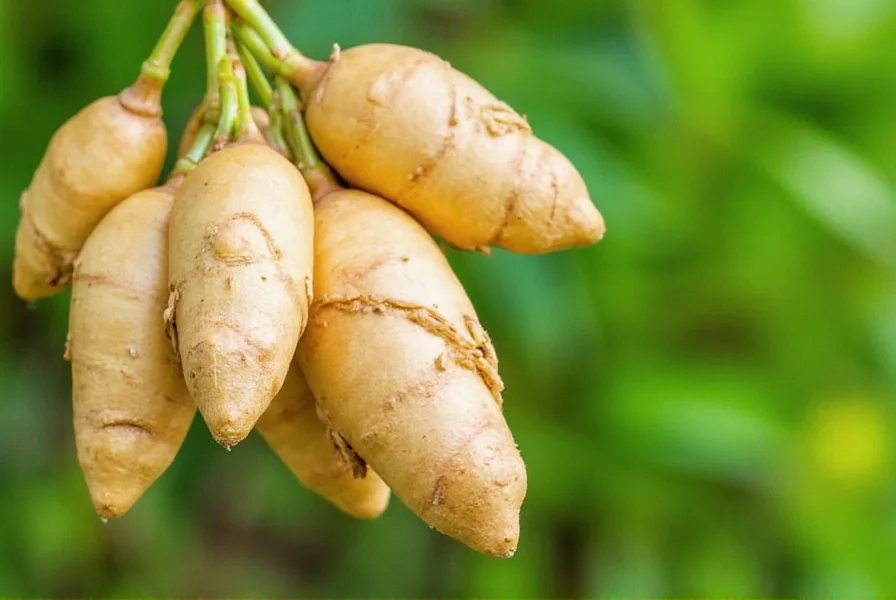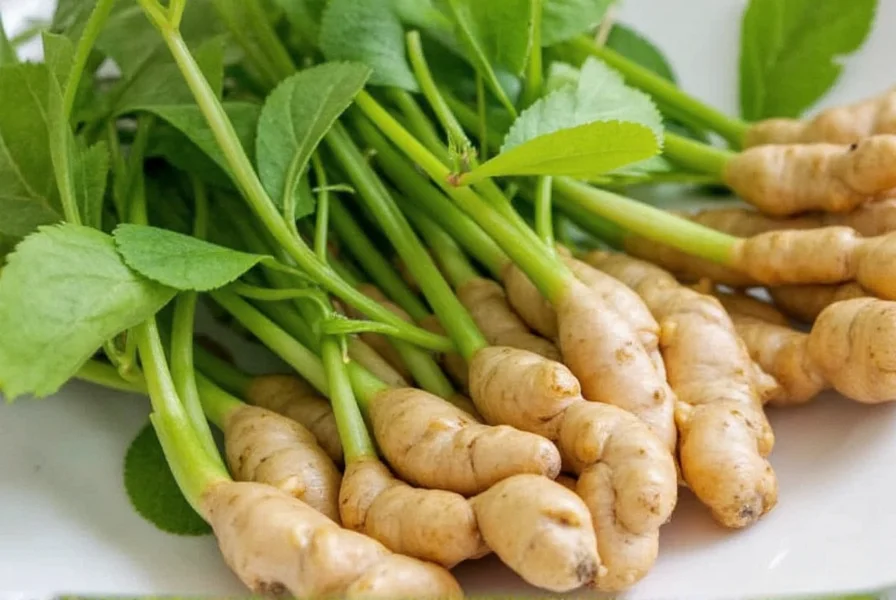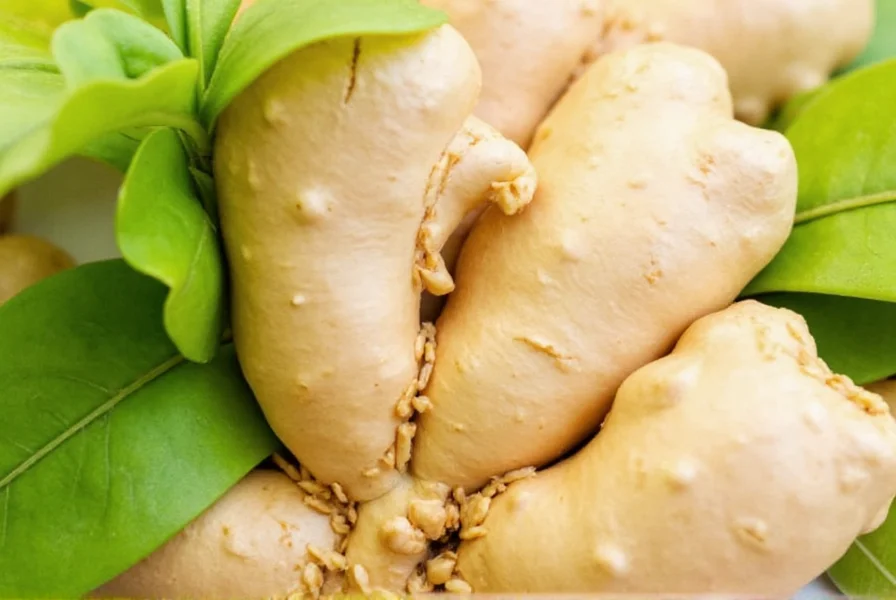Growing your own ginger at home is simpler than many gardeners realize, offering fresh, organic rhizomes for cooking, teas, and natural remedies. This tropical perennial thrives in warm climates but can be cultivated indoors almost anywhere with proper care. Whether you're an experienced gardener or trying your first container plant, ginger provides a rewarding harvest of aromatic, flavorful roots that surpass store-bought options in freshness and potency.
Understanding Ginger Plant Biology
Ginger (Zingiber officinale) isn't technically a root but a rhizome—a horizontal underground stem that stores nutrients and produces new growth. This distinction matters for proper cultivation, as rhizomes require specific planting orientation and growing conditions. Unlike many vegetables, ginger grows horizontally rather than downward, making container depth less critical than width. The plant features reed-like stalks reaching 2-3 feet tall with narrow leaves and occasional yellow or white flowers in optimal conditions.
Essential Materials for Growing Ginger
Before starting your ginger cultivation journey, gather these fundamental supplies. Quality materials significantly impact your success rate when learning how to grow ginger at home.
| Item | Recommended Specification | Why It Matters |
|---|---|---|
| Ginger rhizomes | Fresh, plump with visible 'eyes' (growth buds) | Supermarket ginger may be treated to prevent sprouting; organic is preferable |
| Container | 12-16 inches deep with drainage holes | Prevents waterlogging while accommodating horizontal growth pattern |
| Soil mix | 2 parts potting soil, 1 part compost, 1 part perlite | Creates ideal balance of moisture retention and drainage |
| Fertilizer | Balanced organic fertilizer (10-10-10) | Supports healthy rhizome development without chemical residues |

Step-by-Step Ginger Cultivation Guide
Selecting Quality Ginger Rhizomes
The foundation of successful ginger growing starts with selecting viable rhizomes. Look for plump, firm pieces with multiple visible growth buds (often called "eyes"). Organic grocery store ginger works best as conventional varieties may be treated with growth inhibitors. Soak rhizomes in lukewarm water for 2-4 hours before planting to stimulate growth—this simple step for how to grow ginger indoors dramatically improves sprouting success.
Optimal Planting Time and Conditions
Timing significantly impacts your ginger harvest. In tropical climates (zones 9-12), plant ginger rhizomes in early spring after the last frost. For indoor cultivation, start anytime but consider seasonal light patterns. Ginger requires 8-10 months of warm growing conditions before harvest, so timing your planting ensures mature rhizomes before cooler temperatures slow growth.
Planting Your Ginger Rhizomes
Follow these precise steps for planting success:
- Fill your container with 2-3 inches of prepared soil mix
- Place rhizome pieces with growth buds facing upward
- Cover with 2-4 inches of soil (deeper in hot climates)
- Water thoroughly until moist but not saturated
- Maintain consistent soil temperature between 71-86°F (22-30°C)
Watering and Light Requirements
Ginger thrives in conditions mimicking its native tropical habitat. Maintain consistently moist (not wet) soil throughout the growing season. Water when the top inch of soil feels dry, typically 1-2 times weekly depending on climate. Provide dappled sunlight or partial shade—direct afternoon sun can scorch leaves. Indoors, position near an east-facing window or use grow lights for 6-8 hours daily. Understanding proper watering techniques is crucial for those learning how to grow ginger successfully without rotting the rhizomes.
Fertilization Schedule for Maximum Yield
Nutrient management directly impacts your ginger harvest size. Begin fertilizing 8 weeks after planting with a balanced organic fertilizer every 4-6 weeks. Increase potassium content during the final 2-3 months to encourage rhizome development. Avoid high-nitrogen fertilizers which promote excessive leaf growth at the expense of rhizome production. For organic growers, compost tea applications every 3 weeks provide gentle, consistent nutrition for healthy ginger cultivation.
Monitoring Growth and Development
Ginger follows a predictable growth pattern when cultivated properly. Within 2-3 weeks, green shoots emerge from the soil. By month 3, the plant develops multiple stalks with lush foliage. Months 4-6 represent peak vegetative growth, while months 7-10 focus energy on rhizome expansion underground. Understanding this timeline helps gardeners manage expectations when learning how to grow ginger from scratch.
Troubleshooting Common Ginger Growing Problems
Preventing and Managing Ginger Rot
Rhizome rot remains the most common challenge in ginger cultivation, typically caused by overwatering or poor drainage. Prevent rot by ensuring proper soil aeration and avoiding water accumulation. If rot appears (soft, mushy rhizomes with foul odor), immediately reduce watering and improve drainage. Remove affected sections with sterilized tools, treating cut surfaces with cinnamon powder—a natural antifungal that won't introduce chemicals to your edible crop.
Addressing Pest Issues Naturally
Ginger generally resists most pests but may occasionally attract spider mites or aphids, especially indoors. Combat these naturally by spraying leaves with a solution of 1 part milk to 2 parts water, which disrupts pest feeding without chemicals. For severe infestations, introduce beneficial insects like ladybugs or use insecticidal soap sparingly. Maintaining proper air circulation around plants significantly reduces pest problems when growing ginger at home.
Harvesting and Storing Your Home-Grown Ginger
Determining Harvest Readiness
Knowing when to harvest ginger ensures optimal flavor and yield. Mature ginger shows these signs:
- Leaves begin yellowing and dying back naturally
- Stems become less rigid and start leaning
- At least 8 months have passed since planting
- Rhizomes feel firm and substantial when gently probed
For continuous harvest, you can carefully dig around the edges of the plant to harvest individual rhizomes while allowing the plant to continue growing—a technique particularly valuable for those with limited space when learning how to grow ginger indoors.
Proper Harvesting Technique
Follow these steps for successful ginger harvest:
- Reduce watering 1-2 weeks before harvest to dry the soil slightly
- Carefully dig around the plant perimeter with a hand trowel
- Lift the entire rhizome cluster gently from the soil
- Shake off excess soil without washing (moisture promotes mold)
- Cure rhizomes in a shaded, well-ventilated area for 3-5 days
Storing Your Ginger Harvest
Maximize shelf life with these storage methods:
- Refrigeration: Store in a paper bag in the vegetable crisper (up to 3 weeks)
- Freezing: Peel and freeze in airtight containers (up to 6 months)
- Drying: Slice thinly and dehydrate for ginger powder (indefinite storage)
- Preserving: Submerge in sherry or vinegar for culinary use
Advanced Ginger Cultivation Tips
Experienced growers can enhance their ginger harvest with these professional techniques. For larger rhizomes, practice "hilling" by gradually adding soil around the base as the plant grows, encouraging additional rhizome development. In cooler climates, use black plastic mulch to warm the soil and extend the growing season. When growing ginger in containers, choose wide, shallow pots rather than deep ones to accommodate the plant's horizontal growth pattern. These specialized methods significantly improve results for those committed to mastering how to grow ginger successfully.

Common Questions About Growing Ginger
Can I grow ginger from store-bought ginger?
Yes, you can grow ginger from store-bought rhizomes, but organic varieties work best as conventional supermarket ginger is often treated with growth inhibitors. Look for plump pieces with visible growth buds (eyes), soak them in lukewarm water for a few hours before planting, and ensure proper growing conditions with warm temperatures and consistent moisture.
How long does it take to grow ginger from planting to harvest?
Ginger requires 8-10 months of warm growing conditions before reaching full maturity. You'll see green shoots emerge within 2-3 weeks after planting, but the valuable rhizomes develop slowly underground. For a full harvest, wait until the leaves begin yellowing and dying back naturally, typically around 8 months after planting in optimal conditions.
Why are my ginger plant's leaves turning yellow?
Yellowing leaves can indicate several issues: overwatering (most common), insufficient light, nutrient deficiency, or natural senescence as the plant prepares for harvest. Check soil moisture first—ginger needs consistently moist but not waterlogged soil. If yellowing occurs after 8+ months of growth, it likely signals natural maturity rather than a problem.
Can I grow ginger indoors year-round?
Yes, ginger grows well indoors with proper conditions. Use a container at least 12 inches deep with drainage holes, place near an east-facing window or provide 6-8 hours of grow light daily, and maintain temperatures between 71-86°F (22-30°C). Indoor growers should increase humidity with a pebble tray or humidifier and monitor soil moisture carefully, as indoor environments tend to dry out faster.
What's the best soil mix for growing ginger?
The ideal soil mix for ginger combines 2 parts high-quality potting soil, 1 part compost, and 1 part perlite or coarse sand. This creates a nutrient-rich medium with excellent drainage—critical for preventing rhizome rot. The soil pH should be slightly acidic to neutral (5.5-7.0). Avoid heavy garden soils that retain too much moisture, as proper drainage is essential when learning how to grow ginger successfully.











 浙公网安备
33010002000092号
浙公网安备
33010002000092号 浙B2-20120091-4
浙B2-20120091-4